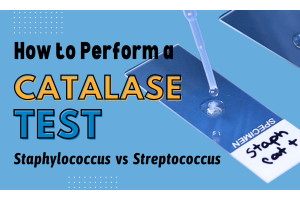Can Microbiome Have an Influence on Breast Cancer?
Posted:
November 24, 2017
October is National Breast Cancer Awareness month, and while breast cancer is the most prevalent cancer among women worldwide, more than half the women who develop this cancer have no known risk factors. The risk factors that are known are not always good predictors of developing breast cancer, including those who are genetically predisposed and those who are exposed to known environmental risk factors.
For this reason, breast cancer is one of the most publicized and researched types of cancer. Naturally, microbiologists researching breast cancer look to the microbiome for clues and potential cures or treatments. This is not unprecedented; the composition of an individual’s microbiome has been linked to many diseases, either as causes or potential contributing factors, such as autism, diabetes, and asthma.
The general line of thinking for the microbiologists in the breast cancer research community is that variation in the human microbiome correlates to breast cancer development by modifying systemic estrogen levels. The Cleveland Clinic hypothesizes that not only does this relationship exist, but it is potentially a causal relationship, with the microbiome modifying the systemic estrogen levels to the point that “cancerous breast tissue is associated with a microbiomic profile distinct from that of benign breast tissue, and that microbiomes of more distant sites, the oral cavity and urinary tract, will reflect dysbiosis as well.”
They argue that this is also related to the link between breast cancer and high-fat, low-fiber diets. They claim that while a distinct microbiome has been identified within breast milk and tissue, few studies have characterized the differences in the microbiome within women with or without cancer. They identify this as a hole in the research, and attempt to begin to fill it.
To investigate this hypothesis, fifty-seven women with invasive breast cancer undergoing mastectomy and 21 healthy women undergoing cosmetic breast surgery were enrolled. The bacterial 16S rRNA gene was amplified from urine, oral rinse, and surgically collected breast tissue, sequenced, and processed through a QIIME-based bioinformatics pipeline. They found that cancer patient breast tissue microbiomes were clustered in a significantly different way from non-cancer patients, namely by decreased levels of Methylobacterium in cancer patients. Their report showed no significant difference in oral rinse samples, and that differences in urinary microbiomes were largely correlated with menopausal status, with postmenopausal women showing decreased levels of Lactobacillus.
Cancer patients had increased levels of Gram-positive organisms including Corynebacterium, Staphylococcus, Actinomyces, and Propionibacteriaceae. They feel this suggests that the local breast microbiota differ in patients with and without breast cancer, but is possibly not a systemic difference. Cancer patient urinary microbiomes were characterized by increased levels of Gram-positive organisms in this study, but should be studied further due to possible confounding variables.
Despite the lack of findings provided in this study, other studies of microbiomic analysis of both breast milk and tissue shows that the human breast harbors unique and diverse microbiota; one that is at least partially derived from translocation of gut microorganisms. In addition to modulating the immune system, these gut microbes are known to play a vital role in estrogen metabolism; so they are not convinced that the lack of systemic evidence implies their initial hypothesis was incorrect. They suggest further studies on the breast tissue microbiome’s role in local estrogen metabolism and breast carcinogenesis are warranted.
by Kate Massey
Technical Support Specialist
HARDY DIAGNOSTICS
Comment(s)







